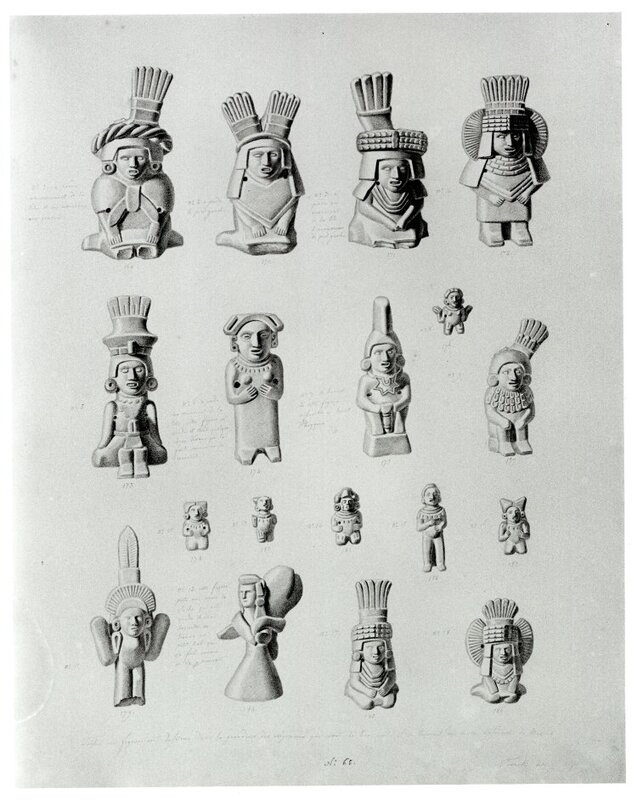Transferring Artifacts to the United States
Poinsett promoted his nationalist and expansionistic ideas through his donations to the museum of Charleston’s Literary and Philosophical Society. In 1826 the periodical United States Catholic Miscellany reported that Poinsett donated “six figures of various size and descriptions, together with a splendious specimen of Obsidian and several beautiful pieces of mineral.”[4] The article also compared a variety of fragments and the various sculptured figures with the quality of those of European background. The following year Poinsett sent more collections to the United States. The Museum of the Literary and Philosophical Society of Charleston received “three cases of minerals” in which they contained “a miscellaneous collection of beautiful specimens…and a geological suite of the minerals composing the mountains and mines of Tlalpujahua.”[5] In the meeting of the Trustees of the Columbia College, in New York, held on 1 July 1828, the president of the college informed them that Poinsett had “presented to the College a suite of silver ore and Mexican antiquities.”[6] Poinsett continued his deposits to institutions in the United States, as seen in 1830 via the publication of Transactions of the American Philosophical Society. A list that outlined thousands of “Mexican Antiquities” was published giving credit to Joel Poinsett to the gift and it requested that an artist who had been in Mexico making drawings of Mexican antiquities be allowed to make copies of some of the items in the collection. With this permission Maximillian Franck “has availed himself with much fidelity and talent” and made an exceptional documentation of the collection.[7] Poinsett’s collection was accepted at the same time as a new collection of ancient Mexican artifacts from a fellow APS member, who also served on Stephen Long’s expedition to the Great Lakes in 1823, W.H. Keating. These donations made the APS instantly one of the most important sites for the study of ancient Mexico.[8]
Among these donations was the artifact which became known as Montezuma’s Tribute Roll. In the Transactions of the APS, the APS credits Poinsett for donating it along with thousands of Mexican antiquities “collected by him during a residence of five years as Minister to Mexico from the U. States of Am.”[9] The manuscript identified as “Hieroglyphic Paintings on Maguey Paper” consisted of several pages.[10] The rest of the extensive collection included precious metals and minerals as well as a variety of pottery, vases, shells, musical instruments and importantly “Copies of the Ancient Sacrificial Stone, Calendar Stone and Goddess of war, modelled in Wax from the originals in the National Museum of Mexico.”[11] Copies of the famed Calendar Stone were rare. William Bullock made one and placed it on display at the Egyptian Hall in London. Having a replica in the United States offered a critical source for scholars to utilize and made scholarship on Mexico possible.
This is a fact that is significant! It is really just a test of a block quote function.
